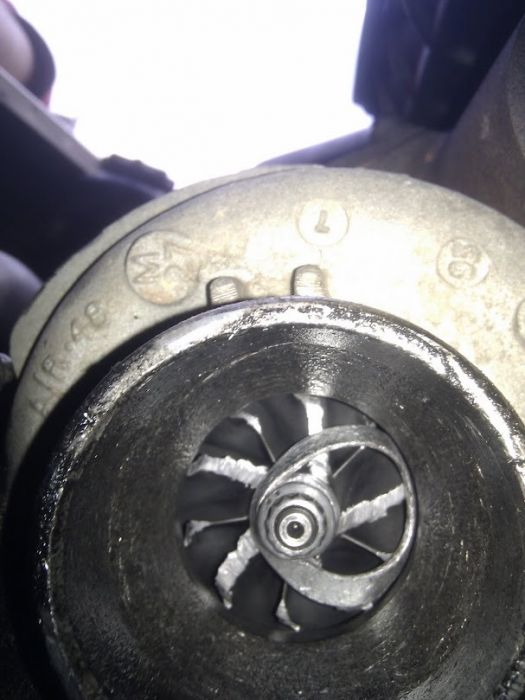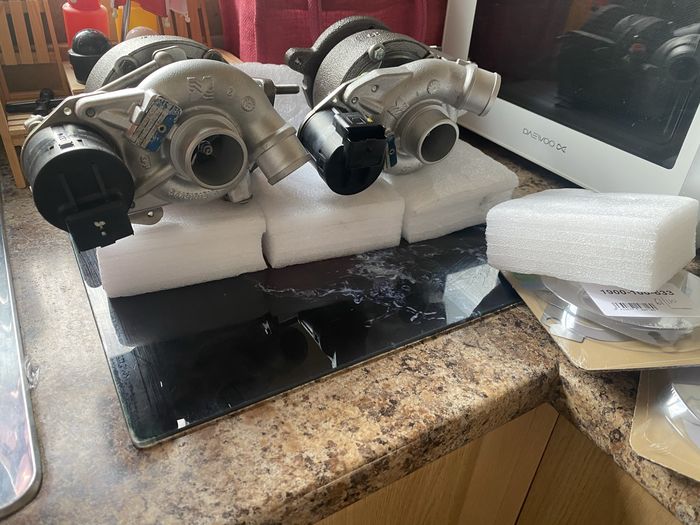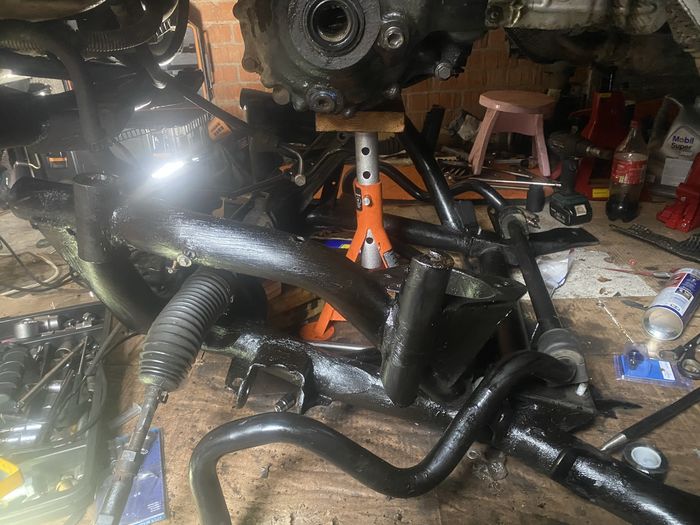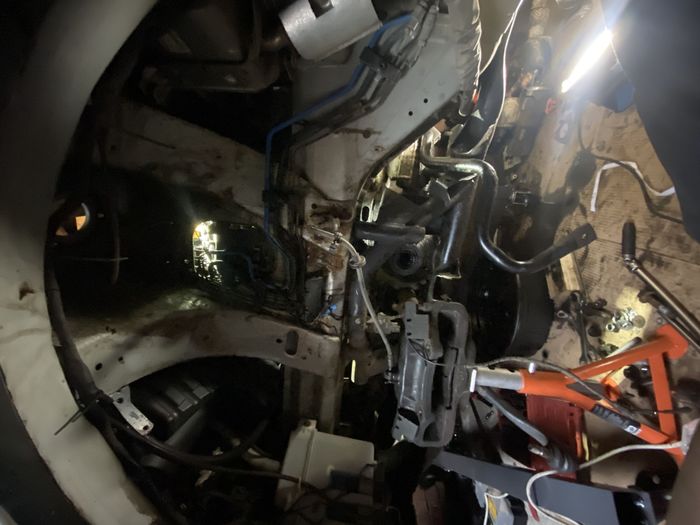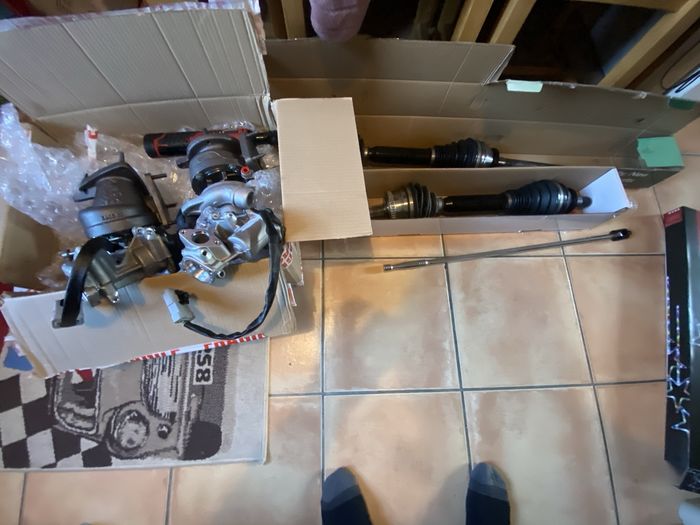 | Home > Maintenance & Mods (L322) > TDV8 Turbo failure |
 
|
|
|
| Cam-Tech-Craig Member Since: 04 Aug 2011 Location: Gloucestershire Posts: 16341  
|
My 1.6HDi Peugeot van has done 214k on the original turbo and has been very well looked after by the self employed original owner, then by us... And the 1.6HDi has a worse reputation then the FF for eating turbos...
|
||
|
| GraemeS Member Since: 07 Mar 2015 Location: Wagga area Posts: 2663 
|
From the parts catalogue I note that the 3.6 sump fitted to the L322 has 2 drain plugs similar to the 3.6 sump for the RRS. I understand that if the RRS's rear drain plug isn't removed during oil changes then sludge eventually builds up blocking turbo drains. Is this the same situation for the L322?
|
||
|
| sako243 Member Since: 26 Dec 2013 Location: Wales Posts: 613  
|
Put it this way: a turbo has one moving part (caveats below).
|
||||
|
| Mikey Member Since: 10 Jan 2008 Location: Dundee Posts: 1816 
|
We have been through the cool down/idle issue in another thread. Some people agree, some didn't. |
||
|
| sako243 Member Since: 26 Dec 2013 Location: Wales Posts: 613  
|
Out of curiosity who makes the turbo? Garrett? Ed |
||
|
| Cmdigger Member Since: 21 Oct 2020 Location: Northamptonshire Posts: 5 
|
Mikey, I know this an older thread, but when you took your turbos out did you support the engine to pull the rear of the subframe down ? Iâm about to begin replacing both of mine and canât seem to find to much info regarding the best way. I think I can get in if I can drop the rear of the subframe but was wondering if I needed to support the engine above or if I can just support the front of the subframe and that will suffice. Any pointers will be appreciated. |
||
|
| ur20v Member Since: 19 Feb 2019 Location: None Posts: 634 
|
Cmdigger... document your turbo replacement for others... will be a useful for everyone here with a TDV8. ð |
||
|
| Cmdigger Member Since: 21 Oct 2020 Location: Northamptonshire Posts: 5 
|
Sorry pal didnât have the time to document it. Managed to replace both turbos, both egrs, both front air struts, new front half shafts, new diff/half shaft seals, new alternator, new water pump and a few other odds and sods, nothing really needed replacing turbos hadnât failed etc but the old girl has done 128k and it tows my machines around all the time so itâs mostly towing 3.5 tons most days so thought it was time to sort things out before anything went wrong. Not to bad of a job I managed to do mine in my single garage. I removed the subframe (also sanded and wax oiled while I was at it) but I didnât need to take the front diff out nor did I need to recover the aircon and remove the aircon pipe running down the passenger side bank of the engine (just manipulated the pipes enough and it all still works). I found having a powerful impact wrench really helped with getting the suspension apart and the front driveshafts off. Father in law made me a mad max tool to push the the old shafts out of the hub (wasnât bothered about damaging them as was replacing them anyway). Getting the new ones in was a pain I ended up drilling and tapping the ends to put a slide hammer on to get them in. Happy to answer any queries but Iâm by no means a proper mechanic. I figured with the cost of getting someone else to do all the work for me I could buy some new decent tools and have a go. It was daunting at first but (hopefully Iâll never have to) if I was to do it again I think I could get it done in half the time. All in I spent 2 weeks working on it in between other jobs etc. Back up and running again now and it feels brand new. Ran the turbos in for a bit then dropped the oil again and put fresh in and itâs been towing my digger around again so all good.
|
||||||||||
|
| DrRob Member Since: 16 Apr 2015 Location: Petersfield, Hampshire Posts: 4334  
|
Why did you replace EGRs and not simply blank them off with a kit to reduce future risk of turbo damage by EGR break down? Gone to a good home: 2011 4.4 TDV8 Vogue SE Buckingham Blue with Ivory and clear glass = "Rory"
|
||
|
| ur20v Member Since: 19 Feb 2019 Location: None Posts: 634 
|
EGRâs can fail in other ways, like leaking coolant etc so while they are difficult to replace, it make sense while everything is already stripped and access is much easier. |
||
|
| Ricardo Villa Member Since: 01 Nov 2020 Location: Worcester Posts: 186  
|
Replacing the oil feed pipe sounds a sensible option to reduce risk, is this an easy job? Where is pipe situated if that's not a stupid question! 2009 Range Rover Vogue 3.6TDV8, Bournville, Parchment/Navy
|
||
|
| Cmdigger Member Since: 21 Oct 2020 Location: Northamptonshire Posts: 5 
|
Yeah forgot to mention I did replace the turbo oil feed pipe while I was at it (tricker than I thought it would be as getting the new one into place has a bit of a knack to it and without knowing that it took a while to figure out but all is well. I also injected (pinched the little ones calpol injector) the new turbos with fresh oil then loaded the oil feed pipe too with fresh oil and before firing it back up I left the cam sensor lead off and cranked the engine over a fair few times to make sure the turbos had oil before firing. I read plenty of horror stories of people fitting new turbos and blowing them right away. Decided to just replace the egrs as they lasted 128k with no issues so figured I may as well replace them as it all seems to work. Plus Iâve never blanked or know anything about blanking egrs where as itâs pretty simple to replace them once you get the intake plenum off. |
||
|
| Cmdigger Member Since: 21 Oct 2020 Location: Northamptonshire Posts: 5 
|
Sorry mate I didnât answer you, the oil feed pipe for the turbos comes out under the driver side (right hand drive) egr valve and then runs down the back of the engine both sides down to the turbos. Bit of a faff to get it out. I had the intake plenum off and the egrs off as I was replacing them anyway so not to bad. If you was just wanting to change the oil feed pipe youâd be in for a good few hours of work to just get it out, something I think thatâs worth doing tho and it only costs £95 for it and it gives peace of mind. |
||
|
 
|
|
| All times are GMT + 1 Hour |
< Previous Topic | Next Topic > |
Posting Rules
|
Site Copyright © 2006-2025 Futuranet Ltd & Martin Lewis
![]()


